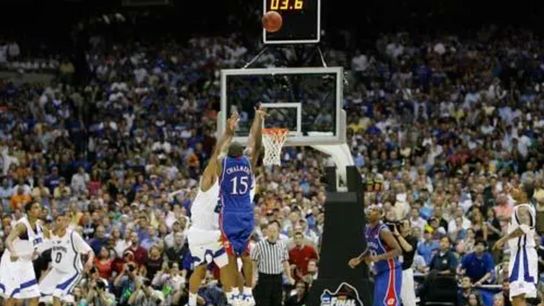It took 15 years from the filing of the landmark O'Bannon v NCAA lawsuit that eventually opened the floodgates to the NIL era to the NCAA board of governors acceptance of the House v NCAA settlement, which, once approved by the courts, will provide direct payments to current NCAA athletes for the first time ever and also provide back pay to former athletes locked out of NIL system due to the rules at the time.
And while O'Bannon eventually won his lawsuit, the ultimate irony is he's not part of the group of athletes set to be retroactively compensated by the House settlement, whose $2.8 billion settlement covers only athletes who competed from June 15, 2016 through Nov. 3, 2023.
A curious thing, given that the NCAA was illegally denying athletes' access to the NIL market long before June 15, 2016.
Now, there are two lawsuits brought by former players of generations past lining up for the same deal won by the athletes of the recent past.
Last month, 10 members of the legendary 1983 NC State men's basketball team -- the squad that scored the historic upset of Houston in the men's basketball championship game -- sued the NCAA and the Collegiate Licensing Company.
"For more than 40 years, the NCAA and its co-conspirators have systematically and intentionally misappropriated the Cardiac Pack's publicity rights -- including their names, images, and likenesses -- associated with that game and that play, reaping scores of millions of dollars from the Cardiac Pack's legendary victory," the lawsuit said.
On Monday, a group of 16 former men's basketball players from the 1990s and 2000s brought their own lawsuit, claiming the NCAA and its member conferences illegally used their NILs in March Madness highlights.
The suit, led by Mario Chalmers and Sherron Collins of the 2008 Kansas national championship team, also includes the six major basketball conferences and Turner Sports Initiative.
"The NCAA has for decades leveraged its monopoly power to exploit student-athletes from the moment they enter college until long after they end their collegiate careers," the lawsuit said, via ESPN. "The NCAA has conspired with conferences, colleges, licensing companies, and apparel companies to fix the price of student-athlete labor near zero and make student-athletes unwitting and uncompensated lifetime pitchmen for the NCAA."
Needless to say, this is: A) completely inevitable, and B) a five-alarm fire for the NCAA, the conferences, and the schools.
The NCAA will pay the House settlement through a combination of reserves and insurance ($1.1 billion) and reduced payouts to the schools. That itself has been a source of great controversy: Houston Christian filed a lawsuit challenging the House settlement, arguing that the non-Power 5 Division I conferences are on the hook for a disproportionate amount of liability, given that the majority of settlement money will go to Power 5 athletes.
“We didn’t get a say in this, and now we’re paying this tax—essentially getting our wages garnished—and we had nothing to say about it, nothing to do with it, and certainly our former student athletes aren’t benefitting from this,” said Big Sky commissioner Tom Wistrcill.
I'm not an economist or a legal expert, so I won't speculate on how expensive the NC State and/or the Kansas lawsuits could be for the NCAA and the schools. But if and when they're successful, what's stopping others from coming forward? On some level, every NCAA athlete dating back to the NCAA's March 31, 1906 founding has had his or her access to the NIL Market illegally denied.
When does it end? That's not a rhetorical question. To me, it ends in one of three general directions: the NCAA and its schools get some sort of Congressional protection shielding them from liability from athletes who competed before the scope of the House case; or those with cases similar to the NC State and Kansas groups simply decline to come forward; or so many ex-athletes bring cases that the NCAA and its member schools seek bankruptcy protection.
As always, stay tuned to The Scoop for the latest.
